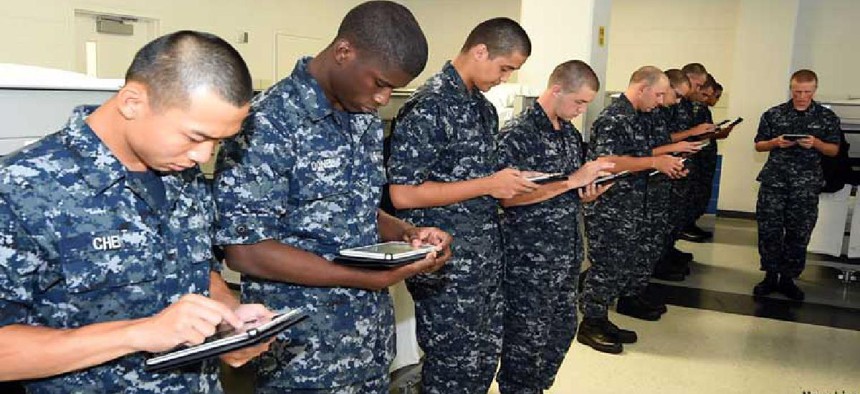Navy, Marines look to boost virtual ‘sailorization’ for recruits

Wwhile recruits are under restricted movement orders to reduce the spread of COVID-19 , the Navy and Marine Corps are using a distributed learning environment where lessons to recruits are pushed to wireless devices.

The Navy and Marine Corps have ramped up virtual training while recruits are under 14-day restricted movement orders to reduce the spread of COVID-19, but still more simulation-based education could be on the horizon.
Rear Adm. Milton Sands, commander for Naval Service Training Command, said that while there isn’t a greater need for simulators, the Navy has been challenged on what to do with sailors when their movement is restricted. “Just by going through that 14-day restriction of movement they're limited a little bit with what we can do,” Sands said during a July 7 news briefing.
That has led to more virtual training for “sailorization” and “what we call warrior toughness training” through a distributed learning environment where lessons to recruits are pushed to wireless devices, such as iPads.
“This COVID has pushed us to do a great deal more with trying to get the distance learning piece, computer-based training, micro-video learning and other things,” said Maj. Gen. William Mullen, commanding general for Marine Corps Training and Education Command.
Virtual training for recruits has been on the rise since social distancing took hold in March. The Army, which had already been experimenting with virtual training, moved much of its recruit training online.
"Social distancing has caused us to actually re-look at every bit of our capacity to be able to bring in as many people as we can," Gen. Paul Funk II, the commanding general for Training and Doctrine Command, told reporters in April.
For the Marines, the pandemic has meant pivoting away from live training environments, Mullen said. “We'd like to be able to do is have large-scale exercises with people plugging into an exercise either virtually or live from multiple locations,” he said. “There's things that we frankly cannot do in a live training environment that can only be done in simulation, and we have to find a way to simulate them.”






